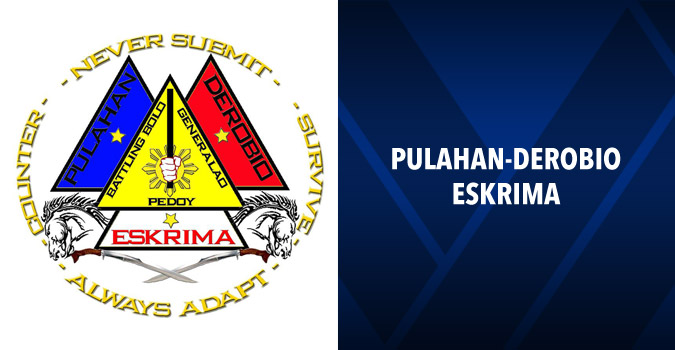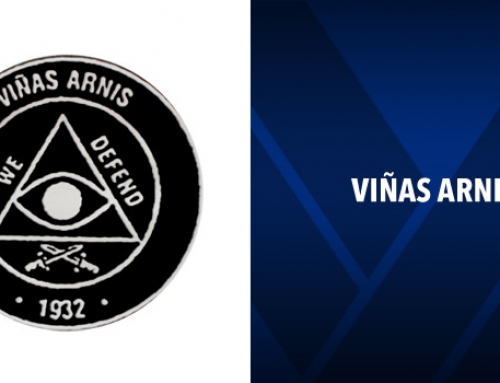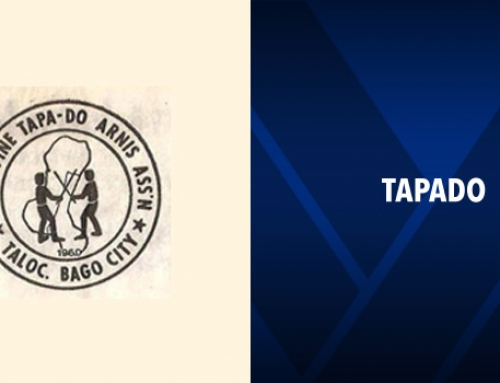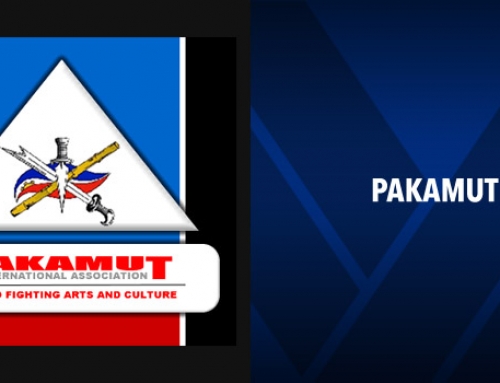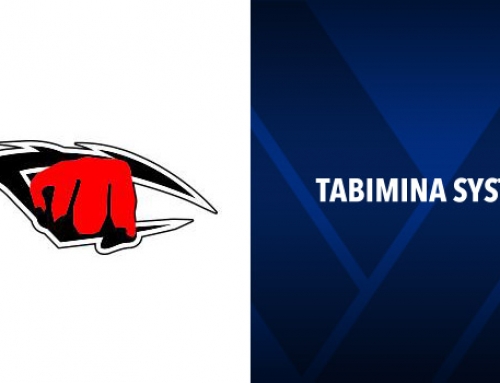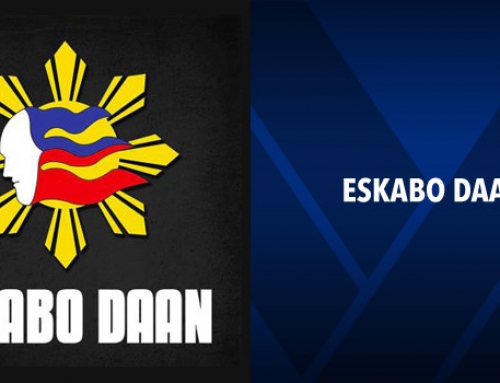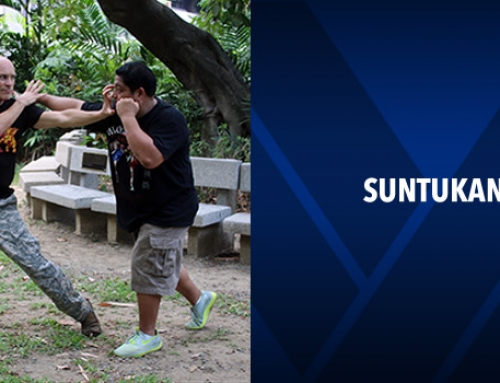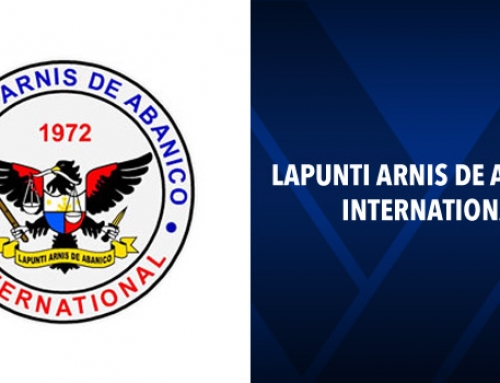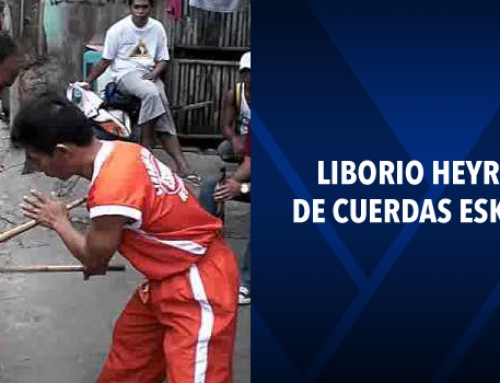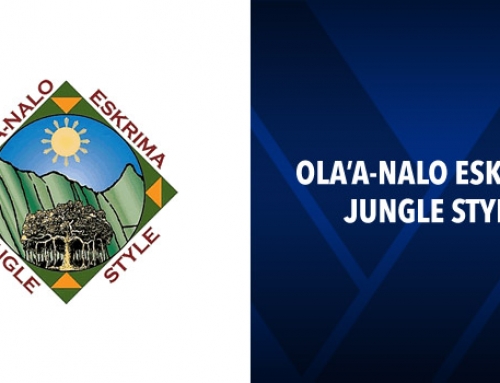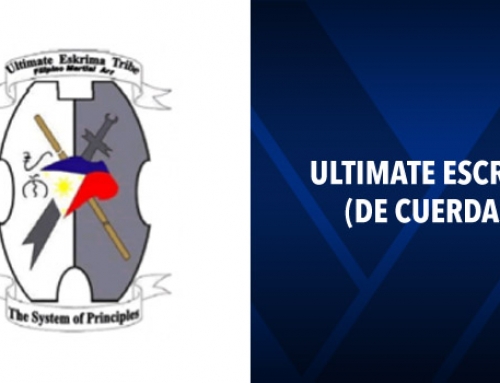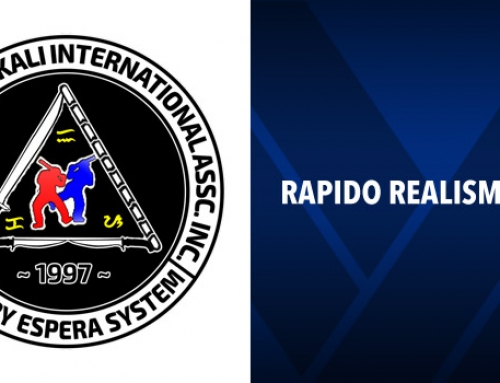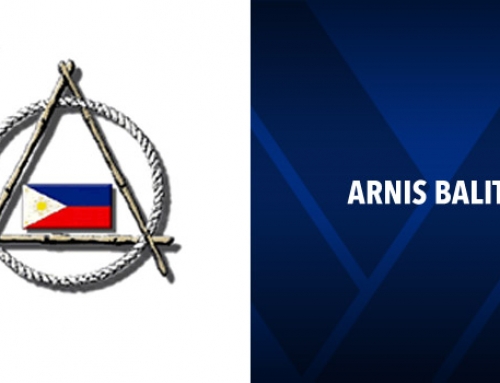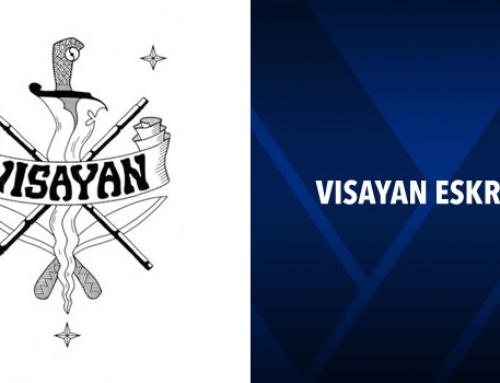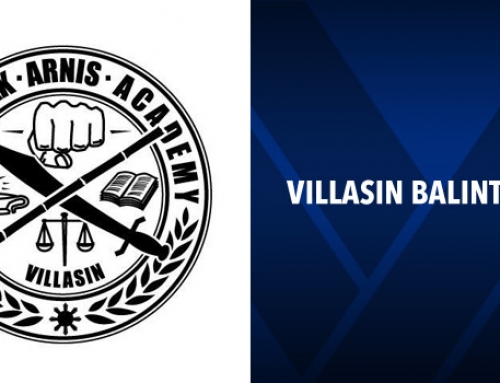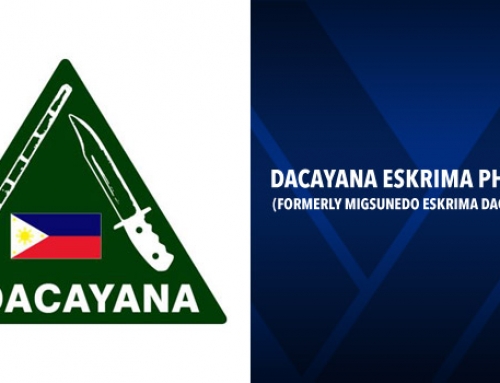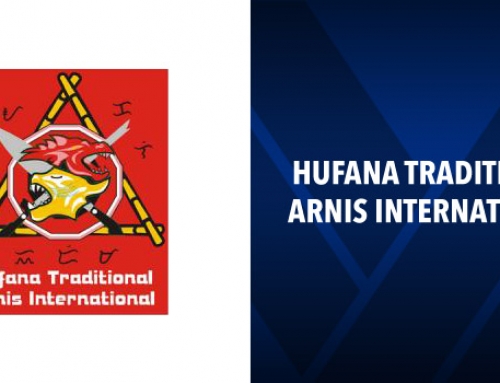Pulahan: literally translated “those wearing red”, we pay homage to these warriors not for their political and religious beliefs or fanatical views but to hold on to the virtues of this warrior sect of never bowing down, to never submit, to stand true to our philosophies as warriors and purveyors of the Filipino Combat Arts.
We want to honor their devout faith in their beliefs, their warrior spirit and skill. We also hold on to the tradition and ranking founded within the Derobio System of the Maestro and Chief instructorship ranks wearing RED; as did our Pulahan predecessors, and as structured by GGM Pedoy in the early 1960’s. The color RED is held to high esteem within our ranks and is a symbol of accomplishment, stature, and skill.
Derobio: literally translated “Rhythm of the Horse”, our foundation to encompass all aspects of combat, the key to all movement, the nucleus of our combative philosophy – to evade and conquer.
This expression of Eskrima as founded by the Siangco Collective is a combative progression of their foundation in the art of Derobio as taught to them by their maternal Grandfather; the late Great Grandmaster Braulio Tomada Pedoy, a highly adaptive and innovative expression of the warrior spirit and skill of their predecessors, the Pulahan Warriors of Leyte.
The Siangco Collective has incorporated various styles of fighting within Pulahan-Derobio Eskrima, keeping its foundation on the original bladed battlefield influenced movements of classical Derobio and adapting to the dynamic threats of today’s aggressors.
Other major influences are that of Grandmaster Julian “Blue” Generalao’s teachings and expression of Chinese Kenpo and the Filipino boxing style, Panantukan,of Elias “Battling Bolo” Cantere, paternal grandfather of the Siangco Collective and former welter-weight boxing champ in the Filipino Smokers fight clubs of Hawaii in the 1920’s.
Pulahan-Derobio Eskrima emphasizes progressive disarming techniques and defensive behaviors that encompass all range of combat that allows the fighter to overcome his aggressor and eliminate any further attack. The basis is deflecting and controlling an opponent’s aggression; effectively and efficiently bridging through all ranges of combat:
Counter-Strike Mindset
- For every block there is a corresponding attack, for every attack a block, for every lock a counter. Evade-Counter – Strike/Block with equal or greater force.
Limb Destruction
- Controlled Chaos: maximum damage without a lethal outcome.
Joint Manipulation
- Axis Control: understanding joint movement to efficiently lock and destroy.
Range Progression
- Largo / Long / “Looking” Range: To scan your opponent, visualize movement and attack/defend outside your opponents range.
- Medino / Middle / “Measure” Range: Sensory ranges, using major senses to measure up your opponent, using full extent of your weapons, EVADE.
- Corto / Short / “Combative” Range: To fully engage your opponent, to completely isolate your opponents weak side, to overcome, counter-for-counter, and CONQUER. Dominate position in Pulahan-Derobio Eskrima.
- Centerline Targeting: Focused control of your opponent’s angles.
- Transitioning: Seamless transfer from each combative range.
These combative states are focused by one thought: A.C.E INTENT
- A = Advance on your enemy, bridge seamlessly through each range of engagement.
- C = Cover your position, Counter every attack and movement.
- E = Empower yourself over your enemy; by leverage, positioning, both physically and mentally. Eliminate any threat…Eliminate your enemy.
Instruction in the following techniques in accordance with above:
- Weapons: Garrote (Stick), Bolo (Long Blade), Daga (knife), Dulo Dulo (Pocket Stick), Duplicada (Double Stick), Espada y Daga (Long Blade / Knife), ASP Tactical Batons, and more…
- Street Defense / Awareness
- Non-Lethal Tactical Training (Arrest / Detain / Submit)
- Lethal Tactical Combat
- Agaws (Grabs / Locks)
- Sikiran (Filipino Kicking)
- Panantukan (Filipino Boxing)
- Dumog (Filipino Grappling / Stick Grappling)
- Destructive Grab Arts of GM Julian “Blue” Generalao’s Chinese Kenpo.
Pulahan-Derobio is based on a 12-strike pattern or “Doce Teros.” This strike pattern allows a fighter to equally disable / strike an opponent on both sides of the body.
12 defenses are then derived from these strikes. From this base, countless techniques are at a fighter’s arsenal. Ultimate expression is the ability to remove ones mindset from structured numbers and accepting any and all attack simply as movement and countering based on reaction of movement/aggression.
Timing, Rhythm and Fluidity are the three major factors that are stressed throughout ones training in Pulahan-Derobio Eskrima. These three factors are taught to bring ones body, mind and spirit into one harmonious entity.
Every movement, strike, and defense must fall into these factors for what one is trying to accomplish will not fall in to place. In Pulahan-Derobio Eskrima, every movement blends and leads into the other.
Seamless transition between each counter attack and defense is emphasized in a fighter’s maturation in the art. Nothing is ever separate or rigid. As referring to the horse, envision it trotting through a field.
It never loses its stride or rhythm and as it gains momentum and speed, it keeps the same timing, rhythm, and fluidity. The ultimate goal of an Eskrimador is to develop this movement because without it a fighter’s strikes and blocks would not matter.
This is true with all martial art disciplines. If there is no flow of movement within a practitioner then the art will never live within him.
GGM Pedoy often commented that a fighter should behave like the wind and branches. “When the wind blows, the branch bends with the force of the wind and then snaps back when the wind stops blowing”.
Learning to follow behind the opponent’s blow is an important element of learning Pulahan-Derobio. Pulahan-Derobio Eskrima relies on gliding movements, ala contra movements and inside counter to counter movements to keep the opponent off guard.
“Never give the same movement twice in a row, or your opponent can easily disarm or counter you. If you take a strike on the inside take it on the outside next time. You must remain unpredictable and remember accuracy is better than speed”
OUR PAST, BEGINNING, INFLUENCE…
PULAHAN
Pulahan, literally “those wearing red”, refers to the members of a religious movement and warrior cult that developed in the Philippines following the Philippine-American War, around 1902-1907.
At its peak, it numbered around 10,000-15,000 adherents. The movement began after the Philippine Constabulary took over patrols in Samar, after the U.S. military declared it pacified.
Pulahan Combat Prowess
The weapon of choice was a heavy, crescent-shaped Bolo knife. Their battle preparations consisted of bottles of holy oil, prayer books, consecrated “Anting-Antings” (magical charms), and other religious paraphernalia.
Led by priest-warlords; one of these priest is known to be our GGM’s teacher General Faustino Ablen, Pulahan were notorious fighters, usually disregarding better technology (such as firearms), in favor of hand-to-hand fighting using their bolos.
The Pulahan sought nothing but death in battle, making them very dangerous combatants and also contributing to their high casualty figures. In seeking death in battle, they believed that those who perished would be sent to paradise.
The Pulahan main battle tactic was simply to advance upon the enemy, fire a volley, then throw down their firearms and rush in to the enemy and fight in hand-to-hand combat.
General “Papa” Faustino Ablen
To the Americans, he was known as a rebel.
To the Pulahan, he was known as a leader and Holy man.
To the Great Grandmaster, he was known as teacher.
Through cultural perspectives, Faustino Ablen was many things to many people. In history, he is known as the rebel leader of the Pulahan of Leyte. A spiritual rebel movement in arms against the occupying forces of the Americans in the late 1800’s – early 1900’s.
Known to his people as “Papa” Faustino Ablen, he was part of a spiritual sect of holy men, proclaimed healers and deliverers of their people, preaching throughout the land of Filipino unity and the evil of the occupying forces.
“Anting-Antings” were magical, spiritual amulets, medallions, and writings that Papa Ablen provided his people before battle and for healing. He was not only known as a healer but also as a fierce warrior.
His army of Pulahan warriors was armed with only their razor sharp bolos, their “Anting-Antings”, and their warrior spirit. The fiercest of warriors of the time matched only by the Moro’s of Mindanao, the Pulahan brought fear to the soldiers with the battle cries of “Tad Tad” as they rushed the regiment lines fearless of the guns knowing of only one thing, drawing blood.
The Pulahan Wars (1902 – 1907) saw much bloodshed on both sides and made Papa Faustino Ablen a wanted man. In history there are many accounts as to what happened to Gen. Ablen, some say he was killed and others say he was captured and never heard of again. From what Great Grandmaster Pedoy has told us through his oral history is that he escaped and found his way to the mountains to live out his life.
It wasn’t until a young boy from Ormoc City ran away from home and came across a small hut and campfire. This boy was Great Grandmaster Braulio Pedoy and the man he found was Faustino Ablen.
To GGM Pedoy, Faustino was a General of a rebel army who refused to salute and bow down to the American flag. Ablen had told GGM Pedoy that he was in hiding and no one has been able to find him until now and that it must be fate that they had met.
Faustino Alben took in GGM Pedoy and taught him his art of Derobio; a battle tested no-nonsense bladed art form of Eskrima. For eleven years, the GGM trained and lived with Faustino Ablen in the mountains of Leyte; as apprentice and master, as it was done centuries before them.
Through a grueling test of his acquired skill and knowledge of Derobio; the young Braulio Pedoy was made Master, Ablen sent GGM Pedoy out into the world to learn and spread the art of Derobio to assure its legacy.
GGM was told to seek out other Eskrimadors and open his heart and knowledge to all forms. Through his travels he met many compadres, had many battles that tested not only his skill but his spirit as well.
Great Grandmaster Braulio Pedoy (1900 – 1992)
Great Grandmaster Pedoy was born on October 16, 1900 in Ormoc City, Leyte, Philippines. At the age of six, he ran away from home and traveled into the mountains of the Southern Visayas where he was taken in by General Faustino Ablen. The General was a leader of the Independence movement against the occupying American forces on the island of Leyte.
For eleven years, the Great Grandmaster lived and trained under the General in the art of Derobio Eskrima. At the age seventeen, Pedoy was tested by the General on what he had obtained in his years with him; their choice of weapon was the bolo.
As it was told , the test lasted almost two hours with Pedoy receiving a cut on the chin and near the eye; the General none. Through his ability to survive the battle, the General awarded Pedoy mastership of his art of Derobio and the task to expand his knowledge of the martial arts and travel the land learning other styles of Eskrima.
In 1924, his travels brought the Great Grandmaster to the island of Hawaii where he worked on the Ola’a Plantation. During World War II he worked as a security guard for the Army.
Later in life he worked and retired from Gaspro Inc. In 1961, Great Grandmaster Pedoy began the first Eskrima School in the islands. The Great Grandmaster would come to be known for his prowess as a man of counters and as a healer in the art of Hilot; Filipino healing and bone setting.
On April 9, 1976, he was awarded a Certificate of Recognition from the State of Hawaii, House of Representatives; awarded the entitlement “Eskrima Expert Extraordinaire”, House Resolution No. 633.
In 1991, he was inducted into the International Martial Arts Hall of Fame for his outstanding contribution in promoting the Philippine martial art of Eskrima.
Batikan Eduardo Pedoy (1946-2008)
Pedoy’s Style Derobio Escrima. Only bloodline heir and son of GGM Braulio Pedoy, Batikan Eduardo James Pedoy was the catalyst to which prompted the GGM to begin teaching the art of Derobio Eskrima as it was taught to him by Gen. Faustino Ablen.
Batikan Eduardo’s first passion of the martial arts was Kenpo, a widely popular art in the islands, and he unknowingly urged to test his skills against his father’s fighting style when he earned his black belt.
As a young man, Batikan knew GGM Pedoy trained with other manongs and friends in the banana patch in the old Filipino blade and stick fighting but never knew the extent of GGM’s prowess and skill.
He was soon humbled by his father and from that day on he put down his black belt and begged GGM to teach him his art of Derobio.
Batikan became the first student and Chief Instructor while training and teaching alongside GGM’s step-grandchildren, his nephews and nieces (step family, GGM Pedoy married Bartolomia (Adaro) Pedoy) Tyrone Takahashi; now head and Grandmaster of the Pedoy’s School of Escrima Organization, Gail (Takahashi) Siangco; who’s family founded the Pulahan-Derobio Eskrima Organization.
Other family members have trained throughout the years; however, these are the two main families of the art. The Pedoy’s School of Escrima was officially opened in 1961 and Batikan Eduardo was at the forefront of structuring the curriculum and training.
Being a big man and power weight lifter in his youth, Batikan formulized a more powerful and direct style within GGM’s passive base of traditional Derobio that complemented his size and which translated greatly to the next generation of students; The Kramer brothers, Knut Peacock, Peter Schmall, Dan Medina, to name a few.
After the passing of GGM Pedoy and his mother Bartolomia in the early 1990’s, Batikan Eduardo moved to the mainland to lay the seeds for the formation of the San Diego Branch of the Pedoy’s School of Escrima, headed by Chris Siangco and his sons.
Batikan would then travel to established branches in New Mexico and solidify the name of Pedoy through the instructors promoted by GGM Pedoy. In 1995, he headed the first Derobio Congregation in which brought all heads of the school together for the first time.
In 2004, he was promoted to his calling as Batikan or “expert” when Grandmaster Tyrone Takahashi resumed control of the Main Branch of the Pedoy’s School of Escrima. Through a long battle with diabetes, Batikan Eduardo passed away on Oct. 22, 2008 and was survived by his step-brothers Ponciano, Alberto and Marshall Adaro; step-sisters, Martina Navares, Rosa Rapoza and Juliana Riddle (mother of Tyrone Takahashi and Gail Siangco).
Under Batikan Eduardo Pedoy the Pedoy School of Escrima has expanded from the Honolulu branch (The Master’s School) in Hawaii to certified branches operating in Southern California, New Mexico, Georgia, and Florida as well as several Chief and Maestro Instructors teaching Derobio in various martial arts schools throughout the USA.
On December 21, 2007 at 10:15am, Proclamation Signing by Mayor Mufi Hanemann, acknowledging the International Martial Arts Hall of Fame Induction of Batikan Eduardo Pedoy. On December 30, 2007, Batikan Eduardo Pedoy was inducted into the International Martial Arts Hall of Fame.

